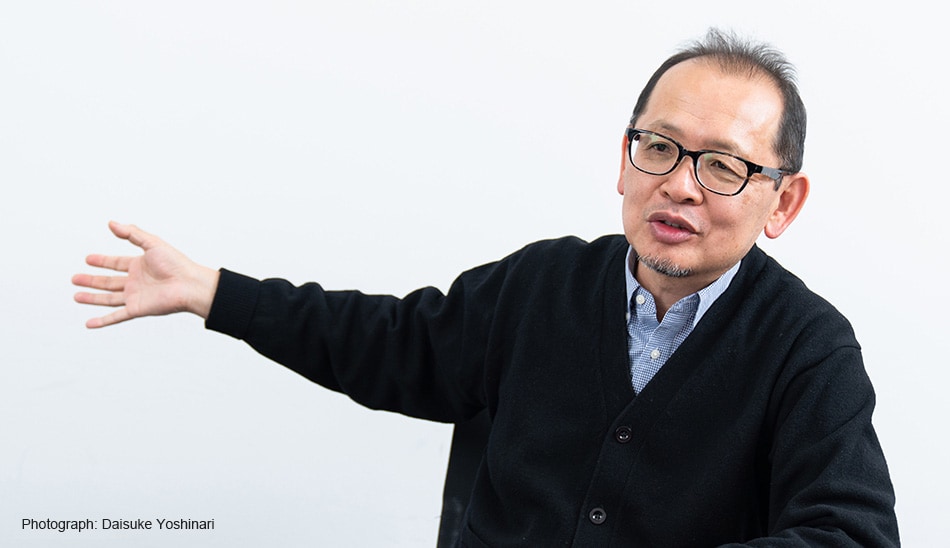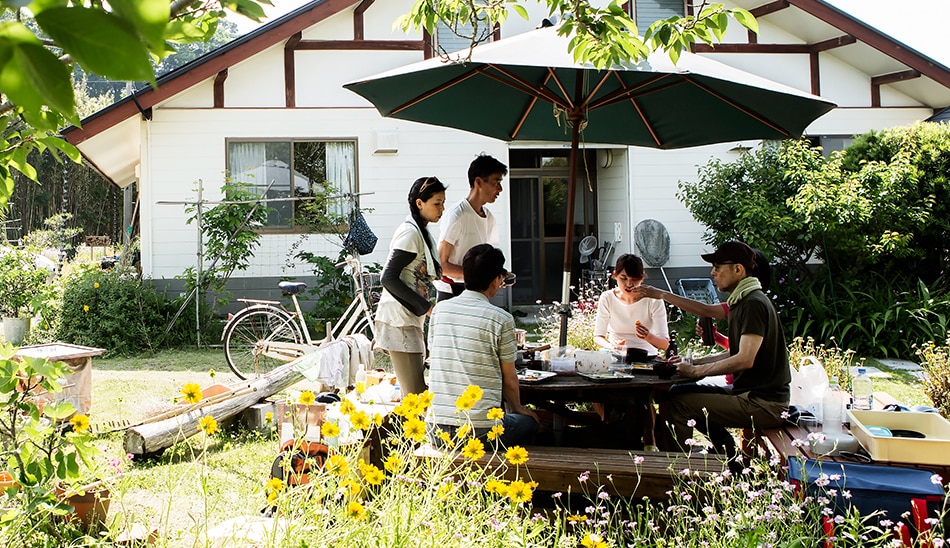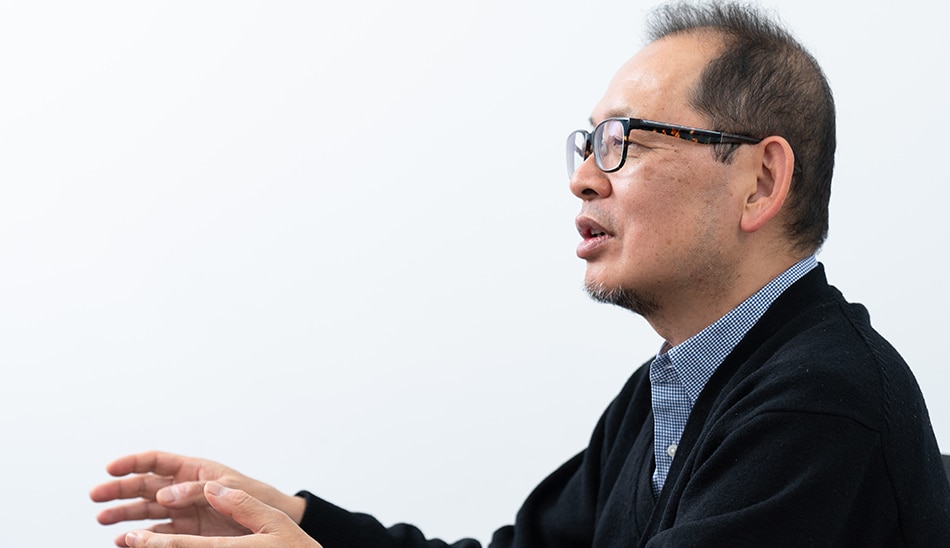
"Are you happy now?"
There are many publications that deal with happiness. Among them, the book What is Happiness Again?(幸せって何だっけ?), authored by obstetrician and gynecologist Dr. Daisuke Hirabayashi (CrossMedia Publishing), has recently been in the news. This book discusses the definitions of what happiness actually is in the first place and the forms of happiness that each individual should strive for.
Dr. Hirabayashi points out that what we have been thinking of as "happiness" is "ready-made." This refers to happiness that is governed by a kind of traditional stereotype or fixed idea as represented, for example, by such conditionals as "getting into a good university," "getting married," and even "catching up with the trend," which do not necessarily perfectly match up with personal happiness in this diversified age.
In this regard, Dr. Hirabayashi suggests in his book that the ideal type of happiness is "self-made," that is, it is something that is created entirely by oneself without relying on other people. He says that one can get a stronger sense of happiness taking things on with an independent mindset. This would enable one to come face-to-face with one's desires and emotions and to find satisfaction in the actions that one took and the results of those actions.

In recent years, the number of people that feel happy from spiritual rather than material things has increased. Professor Takashi Maeno, from the Graduate School of System Design and Management and a director of the Wellbeing Research Center, Keio University (Japan's foremost authority in happiness research), focuses on this change.
According to Professor Maeno, factors in providing people with a sense of wellbeing can be broadly divided into "material wealth" and "spiritual wealth."
It is mainly emerging and developing countries and regions that display a strong tendency to attach importance to material wealth. Places like these direct their interest initially to income and savings and to status symbols such as houses and cars. Water supply and sewage systems, transit services, and the building of infrastructure resilient to natural disasters are also connected to material wealth.
As these material things reach a certain level of abundance, a diversification of lifestyles and ideals for happiness starts to occur. While there are always people that attach importance to the value of material things, the number of people that feel happy in spiritual wealth or fulfillment tends to increase. According to Professor Maeno, this is a phenomenon that is seen in the entire world.
So, what is it that brings about spiritual wealth?
According to factor analysis done by Professor Maeno, there are four factors contributing to the happiness of people in modern-day Japanese society. These are "let's try it", "thank you", "it will turn out all right", and "be yourself"
Details on these four factors are covered in the professor's original article mentioned below, but in summary, he sees these factors as the leaves of a four-leaf clover, each of which influences the other and all of which must be satisfied. When these conditions are fulfilled, people attain a sense of wellbeing.
As an example, Professor Maeno says that, in seeking out self-realization, it is inappropriate to battle with people just to denigrate them. Happiness research also suggests that it is not desirable to "lose sight of yourself by overemphasizing harmony with those around you." When the brain comprehends the mechanism of how the four factors are linked, it naturally takes it all into account and acts accordingly. In other words, keeping the four factors in mind while putting them into practice will create a virtuous circle that will produce happiness in yourself and those around you.
(For details, see Hitachi Review, "Towards a Fully Harmonious Society that Puts Wellbeing First" [November 2019].)
Returning to Dr. Hirabayashi's book mentioned above, it makes the case that true happiness is the self-made happiness that each person creates on their own. Pursuing a happy life and lifestyle means happiness not only for the individual, but also for those around him or her.
In other words, happiness requires one to not simply reside and live in some community. It requires that each person living in such place involves themselves in the community with an independent mindset.
People in the modern age, however, are up against a background that inhibits such independence of mind. This background is the wave of urbanization that has surged throughout Japan and the rest of the world. Emerging nations and regions are rapidly urbanizing, a process that gradually chips away at connections between people in their communities. The fact is that, in communities lacking interpersonal connections with others, community members do not regard community involvement as a personal affair.
So, what kind of initiatives should exist to create happy communities? The following discusses two perspectives that may be our clue.

A happy community, town, or city is one in which the residents involve themselves with its various local events with an independent mindset. But is this really possible?
With a hundred residents of a city having a hundred different problems and concerns, they each adopt an independent mindset to speak up on and share these with others while also having the curiosity to listen to others. Although social media may have already become a tool for realizing this kind of situation, analysis of interactions and information as data is steadily clarifying what people want to do and what they should do. It goes without saying that it is important to have such discussions in both the virtual and real worlds.
Professor Maeno states: "when starting out under such headings as 'solutions to challenges' and 'SDGs,' if there is some kind of outside compulsion to act, then you aren't going to come up with any good ideas. It is better to have a diversity of people get together for dialogue and to approach things with the idea of trying something fun because this will lead to actual activities in which people retain an independent mindset and a feeling of happiness." Having everyone adopt an independent mindset and jointly contribute free ideas in a psychologically safe place can lead to finding solutions for a community’s issue and has the potential to generate innovation.
Among the latest initiatives is the “Habitat Innovation” research, a project carried out by the H-UTokyo Lab, which was created jointly by Hitachi and the University of Tokyo. Aimed at realizing Society 5.0 by leveraging the strengths of both organizations, its purpose is to draw out independent-mindedness, which spurs innovation. In one of the project themes, “urban development”, efforts are being made to combine the knowledge of the University of Tokyo, the technology of Hitachi, and the insight of city residents. Research is also being carried out that makes full use of various technologies, the aim of which is to enable city resident participation in city development with an independent mindset.
Case Studies:
Using Data to Draw Out an Independent Mindset of City Residents

A sense of independence develops by interacting with diverse people, such as those with differing communication styles or different cultures. However, in recent years, the communication that existed in small towns has been lost due to the effects of urbanization, producing a tendency for more-tenuous human relations.
One example of creating a space for drawing out such independence of mind is a project run jointly by Keio University and Tokyo's Minato Ward called "Shiba-no-ie." This moniker in Japanese refers to a house with an old-style wooden veranda located in the residential district of Minato Ward. At first, it served as a place for senior residents to gather for tea. However, after a while, children began to drop by on their way home from school. Eventually, their families also began to participate, giving rise to inter-generational communication. Over time, this led to the natural springing up of events such as the Weekly Lunch Meetup.
Another example is the "Koyu-zaidan" foundation, located in Shintomi-cho, Koyu-gun, Miyazaki Prefecture. This foundation acts as a community trading company that was established based on funding by the "benefit-your-locality" tax scheme. Acting as a community business platform, it engages in the development of entrepreneurs and new industries with speedy responsiveness unattainable via conventional government administrations. Under a vision of having Shintomi-cho become "the easiest town in the world to take on new challenges," the foundation cultivates throughout the entire town a culture of free exchange, in which response to failure is support rather than resistance. Through this, the town is attracting those wanting to move to the area and start a business from all across Japan.
Although these examples of lifestyle and economic spaces appear at first glance to be small in scale, they are gradually popping up here and there and are expected to connect with each other either in the virtual or real world and to grow into a novel type of a “happy community.”
The Key to Creating Happiness: Deepening Interaction and Seeking an Ideal "Space" for Innovation

Drawing out an independent mindset and creating a space to do so—technology-driven backing has considerable influence on creating mechanisms for this. Just as the internet has provided spaces for people to easily connect while making it possible to provide information with an independent mindset, the use of other technologies such as AI (Artificial Intelligence) in the monitoring of happiness also holds great potential.
Embracing the goal of providing a means of happiness management to business management, Hitachi developed “Happiness Planet”, a smartphone app that quantifies the degree of happiness. In conventional organizations and work styles, people often become passive, feeling that it is better to keep one's mouth shut out of fear of how they will be judged by their boss or coworkers. These kinds of psychologically unsafe human relations inevitably give rise to losses in productivity, unforeseeable accidents, and even employee mental issues. Revitalizing organizations and improving productivity may require a new management scheme that implements reform measures based on the analysis of data acquired by visualizing the happiness.
Using a scale to visualize whether or not people are made happy will result in not only having business management, but also product and service development and the many kinds of public activities, including city planning and policymaking. Next-generation technologies will be employed to drive a cycle of measuring data related to happiness, analyzing them, and applying the results to improvement. In an age in which individuals, companies, institutions, and governments are working seriously on the question of what happiness actually is, the development of technologies and platforms that enable such a cycle has great significance.
Initiatives for using technology to "update" happiness are occurring in various areas nationwide in Japan. As such initiatives spread throughout their communities, towns, and cities, these municipalities will connect with each other, leading to an acceleration of regional revitalization. This process has the potential to give birth to increasingly diverse innovation. As transportation companies, logistics companies, and other enterprises that uses Hitachi’s technologies and solutions, and become involved and their mutual ties promoted, “happy communities” will further expand. It is the expansion of revitalized regions where people with independent mindsets have ties to each other in both the virtual and real worlds that will maximize the happiness of people and communities.
Steps of Hitachi’s Social Innovation Business and its plans for the future